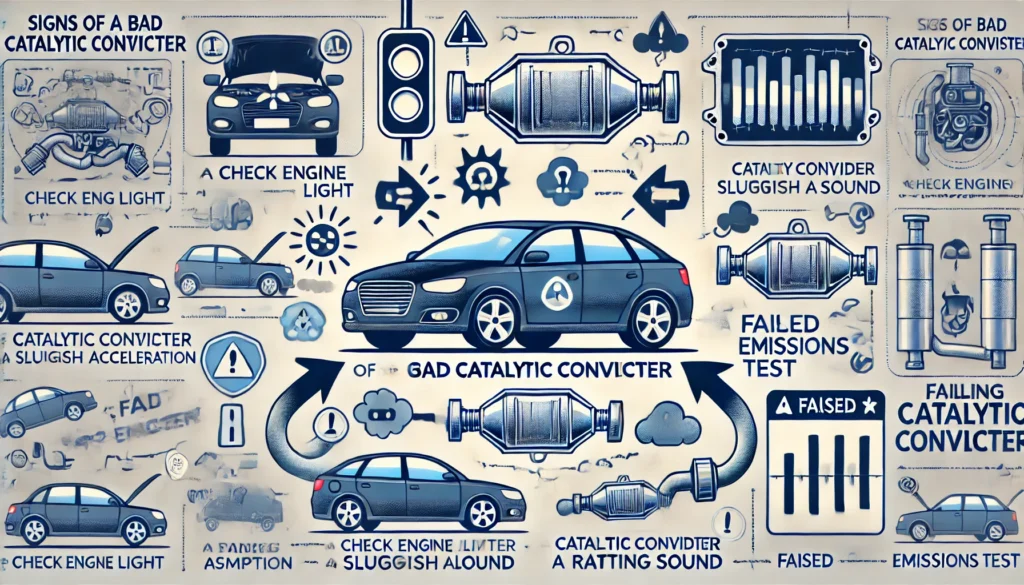The catalytic converter plays a crucial role in reducing harmful emissions from your vehicle’s exhaust system. However, when it fails, it can lead to significant engine performance issues and increased emissions. Knowing how to identify a bad catalytic converter can save you time, money, and the potential headache of more severe vehicle problems. In this article, we’ll explore the key signs and methods to determine if your catalytic converter is bad.

Signs of a Bad Catalytic Converter
Identifying a failing catalytic converter involves recognizing the following symptoms:
- Check Engine Light
One of the first indicators of a problem with the catalytic converter is the check engine light illuminating on your dashboard. This can be caused by a variety of issues, but a common one is a malfunctioning catalytic converter. - Poor Engine Performance
If your vehicle struggles with acceleration or doesn’t reach higher speeds as easily as it used to, this could indicate a clogged or failing catalytic converter. The restricted exhaust flow caused by a bad converter can lead to reduced engine efficiency. - Rattling Noise
A rattling noise coming from underneath your vehicle, particularly when starting the engine, could mean that the internal components of the catalytic converter are damaged or broken. - Decreased Fuel Efficiency
A failing catalytic converter can cause your engine to work harder, resulting in decreased fuel efficiency. If you notice that you’re filling up your gas tank more often, the catalytic converter could be the culprit. - Failed Emissions Test
Since the catalytic converter is responsible for reducing harmful emissions, a failing converter will likely cause your vehicle to fail an emissions test. This is a clear sign that it needs to be inspected and potentially replaced.
How to Confirm if Your Catalytic Converter Is Bad
To accurately diagnose a bad catalytic converter, consider the following methods:
1. Use an OBD-II Scanner
- An OBD-II scanner can read the error codes from your vehicle’s computer. Codes like P0420 or P0430 typically indicate an issue with the catalytic converter.
2. Perform a Visual Inspection
- Look for any visible damage, rust, or discoloration on the catalytic converter. If you hear a rattling noise, tap the converter lightly to see if the noise is coming from loose components inside.
3. Check the Temperature
- Using an infrared thermometer, measure the temperature of the exhaust before and after the catalytic converter. A healthy converter should have a higher outlet temperature. If the outlet temperature is lower or the same, the converter might be clogged.
4. Examine Exhaust Backpressure
- A backpressure test measures the pressure in the exhaust system before and after the catalytic converter. High backpressure indicates a clog or restriction within the converter.
Conclusion
Recognizing the signs of a bad catalytic converter and using the appropriate diagnostic tools can help you address the problem before it leads to more significant issues. If you suspect your catalytic converter is failing, it’s important to consult with a mechanic to confirm the diagnosis and determine the best course of action.
